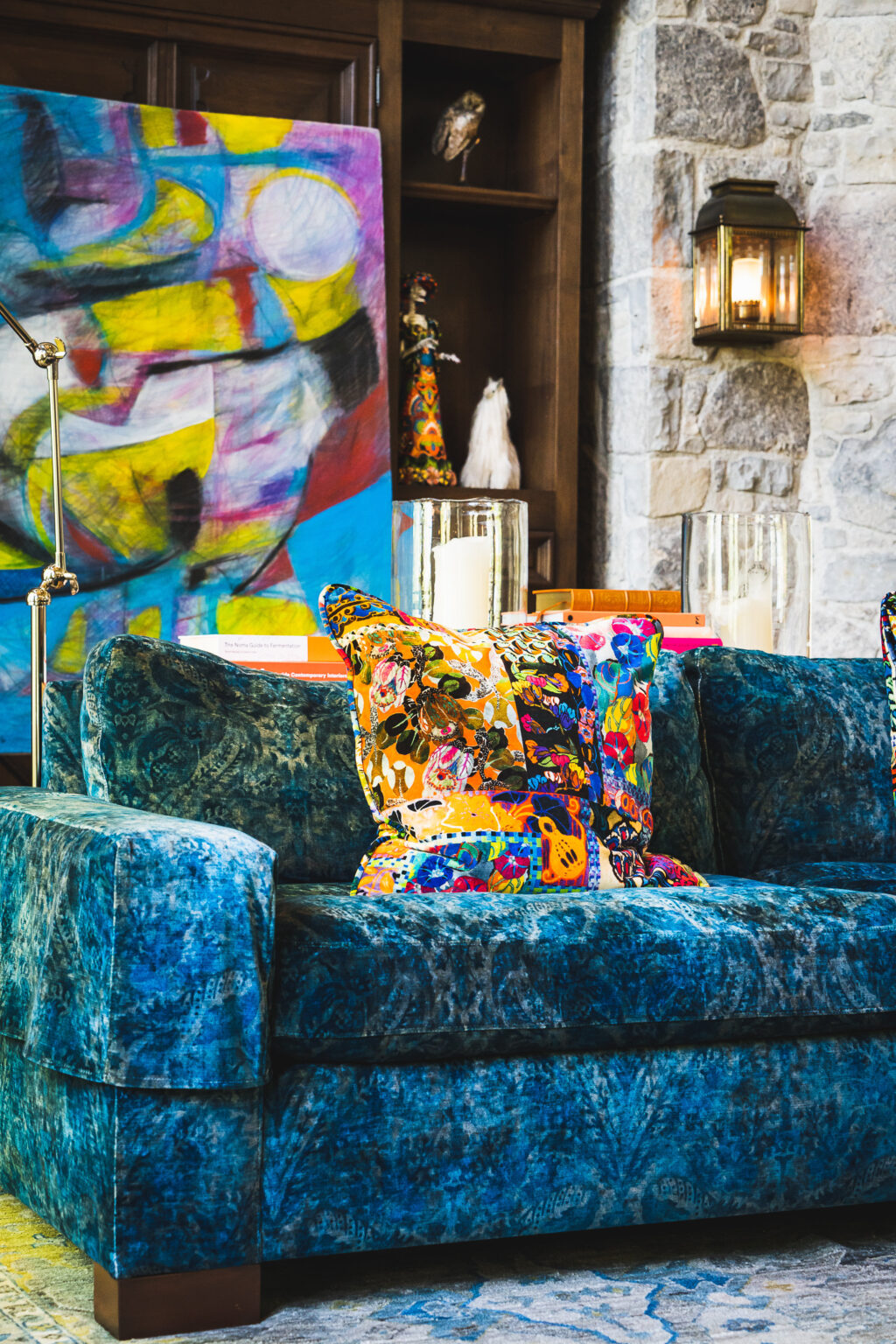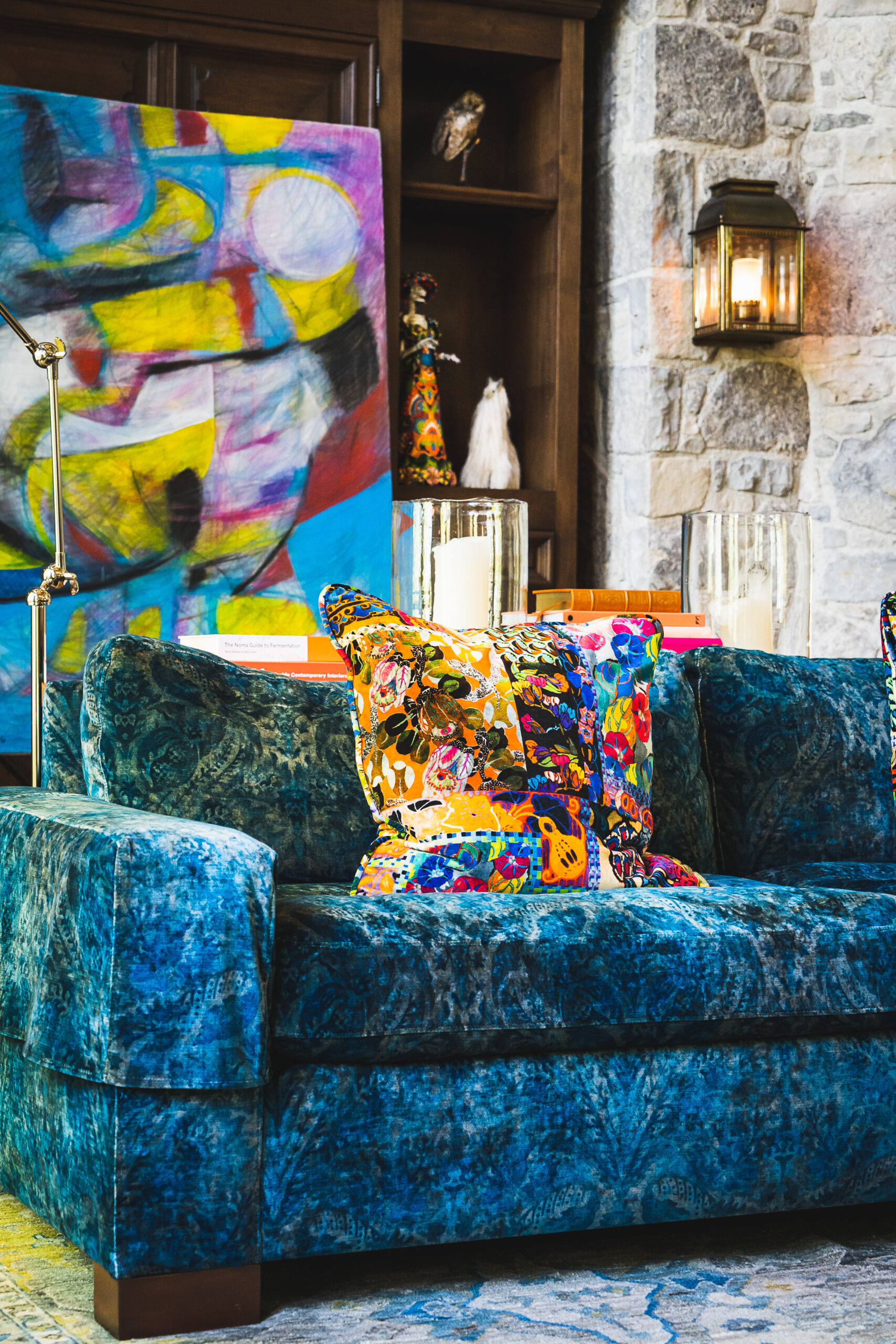If there’s an overarching message about design trends for 2023, it’s that colour is back in a big way. After years of hiding out in beige or grey cocoons, people are ready for a change, and poised to assume the aesthetic risks that come with decorating boldly.
Stepping Dorothy-like from monochrome to Technicolor can be intimidating for home decorators. But there are many benefits to bringing colour into a room, says designer Bren Petrunick, creative founder of the Niagara-based design firm Simply White Interiors, including its mood-boosting properties. “Adding colour can help nurture purpose in a space by evoking feelings of peace and tranquility, or sparking creativity.”
Kate Davidson of Oakville-based Kate & Co. Design says there are three can’t-miss places where even a neophyte can introduce bold hues in an otherwise neutral space. The first is to pick a spot in the house where it feels safer to get creative.
“Most of us wouldn’t want to start with a main room like a living or dining room if we’re nervous. But perhaps you could do a smaller or less public room,” she says. “Powder rooms are a great choice. Or try a playroom or even a home office. Anywhere you can show a bit of personality or individuality would work.”
A second option is to paint cabinetry or built-ins a bold colour. Green is popular for kitchen cabinetry this year, but if doing all the cabinets feels like too grand a gesture, going green for just the lowers or the island is still enough to make a statement. “Or paint a bath vanity, a bookcase, even floating shelves or a pantry,” says Davidson. “Any of these will give you an instant custom look with a minimal commitment.”
Third, if you’re not ready yet for a whole room or even cabinets, choose an unexpected detail and focus on that for now, she adds. Paint your ceiling sky blue. Paint the interiors of bookshelves, so the colour only shows when you move the books, or as a stylish backdrop for displays. Paint one statement piece of furniture, or add one brightly upholstered chair to a more neutral grouping. If all else fails, just add a few bright pillows.
“Another option is to add a multicoloured rug,” says Davidson. “It looks especially good in a modern space and truly pops in a room that’s otherwise all-white or neutral.”
Narrowing down the perfect tone “may require window shopping,” Petrunick notes. “Visit local nurseries and see what flower colours capture your attention; or browse through fabric collections and see what shades tend to draw you in. You might even look at your wardrobe for inspiration. Chances are if you like a colour enough, you’ll find it sprinkled throughout your closet.”
And start small, she says. “If you’re thinking about painting your walls or ordering a new sofa in a vibrant blue, first start with a few décor items, such as pillows, throws or art in the same shade, so you get a sense of how you feel when surrounded by the colour.”
The next hurdle is working with multiple colours in a room. Done right, an attractive palette can make a room look inviting and pulled together — or not.
Petrunick says that there are a few tried and true rules to help guide colour-use choices in a space: start by picking three colours and using the 60-30-10 rule. “This rule suggests that the dominant shade (the primary colour), which is typically a neutral, should be used in 60 per cent of the room. The secondary colour can be a bit bolder and may be applied to 30 per cent of the room. Finally, the accent colour is the power punch, but it is used sparingly, only covering 10 per cent of surfaces.”
Fabric is another good way to bring colour, character and personality into a home, and the old rule about never mixing prints just isn’t true anymore, says Davidson. “It’s really about balance,” she says. Pick a fabric with one dominant, bold pattern, then add a second and third pattern in the same family, but quieter — perhaps a smaller stripe or plaid that picks up one or more of the colours in the main fabric.
Wallpaper, which is also back in a big way, can also be introduced in small, bold doses for those just wading in: a headboard wall in the bedroom, or papering just a ceiling, or panels framed with moulding.
“It will take your space to the next level,” says Davidson. “And a lot of the time, it’s easy to change if you make a mistake or just want a new look. You can always buy new pillows, or repaint a room. “If you’re really anxious, just start with baby steps. But start.”




